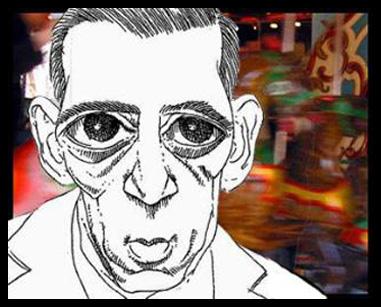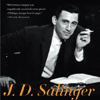Salinger

Autobiographical
J.D. Salinger
in his own words

In 1961 and 1963, when Donald Feine and Warren French attempted to piece together the first serious biographical sketches of J.D. Salinger, they were left to sew together those snippets of personal information provided by Salinger himself through the few interviews he had granted and by drawing upon a number of autobiographical "author contributions" that had been demanded of Salinger to accompany many of his stories in magazines. Here are a few of the more telling "about the author" segments that Salinger wrote over the years, together with his 1951 interview conducted and delivered by William Maxwell for the Book of the Month Club edition of The Catcher in the Rye. Perhaps the most revealing section below was not available to either Feine or French in the early 1960s. "A Salute to Whit Burnett" was not written by Salinger until 1964 and not published until 1975, a year after the editor's death.
Here are a few fragments of J. D. Salinger— in his own words...
"I'm twenty-five, was born in New York, am now in Germany with the Army. I used to go pretty steady with the big city, but I find that my memory is slipping since I've been in the Army. Have forgotten bars and streets and buses and faces; am more inclined, in retrospect, to get my New York out of the American Indian Room of the Museum of Natural History, where I used to drop my marbles all over the floor. . . . I went to three colleges-never quite, technically, getting past the freshman year. Spent a year in Europe when I was eighteen and nineteen, most of the time in Vienna. . . . I was supposed to apprentice myself to the Polish ham business. . . . They finally dragged me off to Bydgoszcz for a couple of months, where I slaughtered pigs, wagoned through the snow with the big slaughter-master, who was determined to entertain me by firing his shotgun at sparrows, light bulbs, fellow employees. Came back to America and tried college for half a semester, but quit like a quitter. Studied and wrote short stories in Whit Burnett's group at Columbia. He published my first piece in his magazine, STORY. Been writing ever since, hitting some of the bigger magazines, most of the little ones. Am still writing whenever I can find the time and an unoccupied foxhole." Salinger Biographical Notes, Story #25 (November-December 1944), page 1 |
I've been writing short stories since I was fifteen. I have trouble writing simply and naturally. My mind is stocked with some black neckties, and though I'm throwing them out as fast as I can find them, there will always be a few left over. I am a dash man and not a miler, and it is probable that I will never write a novel. So far the novels of this war have had too much of the strength, maturity and craftsmanship critics are looking for, and too little of the glorious imperfections which teeter and fall off the best minds. The men who have been in this war deserve some sort of trembling melody rendered without embarrassment or regret. I'll watch for that book." J.D. Salinger. “Backstage with Esquire,” Esquire. October 24, 1945. p.34. |
A Salute to Whit Burnett 1899-1972 BACK IN 1939, when I was twenty, I was a student for a time in one of the present editors'-Whit Burnett's-short-story course, up at Columbia. A good and instructive and profitable year for me, on all counts, let me briefly say. Mr. Burnett simply and very knowledgeably conducted a short-story course, never mugwumped over one. Whatever personal reasons he may have had for being there, at all, he plainly had no intentions of using fiction, short or long, as a leg up for himself in the academic or quarterly-magazine hierarchies. He usually showed up for class late, praises on him, and contrived to slip out early-I often have my doubts whether any good and conscientious short-story-course conductor can humanly do more. Except that Mr. Burnett did. I have several notions how or why he did, but it seems essential only to say that he had a passion for good short fiction, strong short fiction, that very easily and properly dominated the room. It was clear to us that he loved getting his hands on anybody's excellent story-Bunin's or Saroyan's, Maupassant's or Dean Fales' or Tess Slessinger's, Hemingway's or Dorothy Parker's or Clarence Day's, and so on, no particular pets, no fashionable prejudices. He was there, unmistakably, and however reechy it is almost sure to sound, in the service of the Short Story. But I would not ask Mr. Burnett to bear with any further hoarse praise from me. Not quite, anyway, of the same ilk. Here is something that has stuck in my mind for over twenty-five years. In class, one evening, Mr. Burnett felt himself in the mood to read Faulkner's "That Evening Sun Go Down" out loud, and he went right ahead and did it. A rapid reading, among other things, most singularly and undescribably low-key. In effect, he was much less reading the story aloud than running through with it, verbatim, and very thoughtfully, with about twenty-five percent of his voice open. Almost anybody picked at random from a crowded subway car would have given a more dramatic or "better" performance. But that was just the point. Mr. Burnett very deliberately forbore to perform. He abstained from reading beautifully. It was as if he had turned himself into a reading lamp, and his voice into paper and print. By and large, he left you on your own to know how the characters were saying what they were saying. You got your Faulkner story straight, without any middlemen between. Not before or since have I heard a reader make such instinctive and wholehearted concessions to a born printed-page writer's needs and, aye, rights. Regretfully, I never got to meet Faulkner, but I often had it in my head to shoot him a letter telling him about that unique reading of Mr. Burnett's. In this nutty, exploitive era, people who read short stories beautifully are all over the place-recording, taping, podiumizing, televising-and I wanted to tell Faulkner, who must have heard countless moving interpretations of his work, that not once, throughout the reading, did Burnett come between the author and his beloved silent reader. Whether he has ever done it again, I don't know, but with somebody who as brought the thing off even once, the written short-story form must be very much at home, intact, unfinagled with, suitably content. Salutes to Whit Burnett, to Hallie Burnett, and to all STORY readers and contributors. J.D.Salinger. "Introduction" Fiction Writer's Handbook, Hallie and Whit Burnett, New York: Harper and Row, 1975. |
"J. D. Salinger--Biographical," Harper's, 218 (February 1949), page 8. |
| J. D. Salinger JEROME DAVID SALINGER was born in New York City on January 1, 1919. So far as the present population is concerned, there is a cleavage between those who have come to the city as adults and those who were born and raised there, for a New York childhood is a special experience. For one thing, the landmarks have a very different connotation. As a boy Jerry Salinger played on the steps of public buildings that a non-native would recognize immediately and that he never knew the names of. He rode his bicycle in Central Park. He fell into the Lagoon. Those almost apotheosized department stores, Macy's and Gimbel's, still mean to him the toy department at Christmas. Park Avenue means taking a cab to Grand Central at the beginning of vacation. Since there is no positive evidence to the contrary, it is reasonable to assume that people who have any kind of artistic talent are born with it. Something is nevertheless required to set talent in operation. With a writer I think what is required is a situation, something, that is more than he can hope to handle. At the age of fifteen, Salinger was sent to military school, which he not very surprisingly detested. At night in bed, under the covers, with the aid of a flashlight, he began writing stories. He has been writing ever since, writing constantly, and often in places as inconvenient as a totally dark, cold, school dormitory. He was graduated from military school and went to college, in a manner of speaking – to several colleges; but he didn't let the curriculum interfere with his self-imposed study of professional writers. Sometimes the curriculum and his plans coincided, and he was able to take a course in writing. The other students went straight for the large themes: life and death. Salinger's choice of subject matter was always unambitious, his approach to it that of a craftsman. In the midst of his college period, his father sent him to Europe for a year to learn German and to write ads for a firm that exported Polish hams. It was a happy year. He lived in Vienna, with an Austrian family, and learned some German and a good deal about people, if not about the exporting business. Eventually he got to Poland and for a brief while went out with a man at four o'clock in the morning and bought and sold pigs. Though he hated it, there is no experience, agreeable or otherwise, that isn't valuable to a writer of fiction. He wrote and sent what he wrote to magazines in America – and learned, as well as this ever can be learned, how not to mind when the manuscripts came back to him. During the first part of his army service he corrected papers in a ground school for aviation cadets, by day; and at night, every night, he wrote. Later he wrote publicity releases for Air Service Command in Dayton, Ohio, and used his three-day passes to go to a hotel and write stories. At the end of 1943 he was transferred to the Counter-Intelligence Corps. He landed in France on D-Day with the 4th Division, and remained with it, as one of two special agents responsible for the security of the 12th Regiment, for the rest of the war, through five campaigns. He is now living in a rented house in Westport, Connecticut, with, for company and distraction, a Schnauzer named Benny, who, he says, is terribly anxious to please and always has been. Salinger has published, all told, about thirty stories. How completely unlike anybody else's stories they are, and also something of their essential quality, three of the titles convey: A Perfect Day for Bananafish, Just Before the War with the Eskimos, and For Esmé – With Love and Squalor. The Catcher in the Rye was originally a novelette ninety pages long. This version was finished in 1946, and a publisher was willing to publish it, but the author, dissatisfied, decided to do it over again. The result is a full-length book, much richer, deeper, more subjective and more searching. It means little or nothing to say that a novelist writes like Flaubert, since Flaubert invented the modern novel with Madame Bovary, and it is probably impossible not to write like him in one way or another, but it means a great deal to say that a novelist works like Flaubert (which Salinger does), with infinite labor, infinite patience and infinite thought for the technical aspects of what he is writing, none of which must show in the final draft. Such writers go straight to heaven when they die, and their books are not forgotten.
" J.D. Salinger,” Book of the Month Club News, (biograhy to accompany The Catcher in the Rye ) July 1951. |
The author writes: As nearly as possible in the spirit of Matthew Salinger, age one, urging a cool lima bean, I urge my editor, mentor, and (heaven help him) closest friend, William Shawn, genius domus of The New Yorker, lover of the long shot, protector of the unprolific, defender of the hopelessly flamboyant, most unreasonably modest of born great artist-editors, to accept this pretty skimpy-looking book. Dust jacket notes and dedication from Franny and Zooey, September 1961. |
